| Principal Investigators |
 |
Kelly Falkner
Chief Scientist
Oregon State University, Corvallis, Oregon
Kelly is Chief Scientist on the 2003 Nares Strait expedition of the Healy. She is a
chemical oceanographer with over 10 years experience working in Arctic regions. Her interests range and cover many
areas that include physics, geology, chemistry, and people aspects of oceanography. The Canadian Archipelago
Throughflow Study is many ways a synthesis of her skills.
Kelly also contributes significantly to the North Pole observatory which consists of collecting water samples
regularily for analyses of water mass tracers between northern Ellesmere Island and the North Pole.
[more at http://chemoc.coas.oregonstate.edu:16080/~kkfalkner]
|
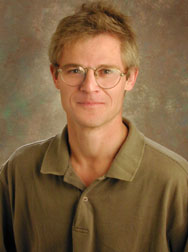 |
Andreas Münchow
Scientist
University of Delaware, Newark, Delaware
Andreas is a physical oceanographer who focuses on coastal and Arctic dynamics. He has sailed
mostly on Canadian icebreakers over the last 10 years with an expertise to measure ocean currents directly from a
moving ship using acoustic Doppler current profilers. The Healy has such an instrument and Andreas will
oversee its operation and processing of the data it returns. He also leads a data processing, management, and
analysis group that has been preparing for this expedition analysing historical data from the study area.
[more at http://muenchow.cms.udel.edu/]
|
 |
Humfrey Melling
Scientist
Institute of Ocean Sciences, Sidney, British Columbia, Canada
Humfrey is a physical oceanographer with research interests in high latitude
oceanography and sea ice. With technical and scientific colleagues at the Institute
of Ocean Sciences, Humfrey pioneered the application of aircraft-based techniques to
the study of ice-covered oceans. Since 1980, he has carried out a wide variety of
ocean measurements using such techniques in the Beaufort Sea, the Arctic Ocean and
the myriad channels of the Canadian Arctic Archipelago.
[more at http://www-sci.pac.dfo-mpo.gc.ca/osap/people/mell
ing_e.htm]
|
 |
Robie Macdonald
Scientist
Institute of Ocean Sciences, Sidney, British Columbia, Canada
Robie is spearheading the clam retrieval on this expedition to investigate the environmental
conditions that Arctic clams record in their annual growth layers not unlike trees do in their
tree rings.
|
 |
| University of Delaware Team Members |
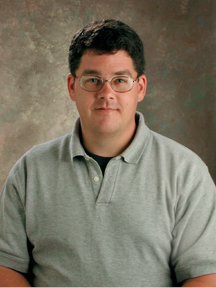 |
David Huntley
Mooring Technician
University of Delaware, Newark, Delaware
David is the mooring technician responsible who will work most close with Peter Gamble and Ron
Lindsey on all aspects of the instruments to be deployed on this expedition. He has worked tirelessly over the last
9 month to prepare, purchase, and assemble all equippment in close collaboration with Andreas and Humfrey. David
has sailed on Canadian icebreakers since 1997 and involved himself in all aspects of sea-going
oceanography.
[more at ~dhuntley]
|
 |
Melissa Zweng
Graduate Student
University of Delaware, Newark, Delaware
Melissa is a physical oceanography graduate student working with Andreas. She studies the temporal
evolution of Baffin Bay waters during the 20th century and recently discovered a significant warming trend in its
deep waters. As an undergraduate Naval Engineering she had to familiarize herself with the technical details of
ships. Her duties at sea will include the collection and processing of both hydrographic and velocity
measurements.
[more at ~mzweng]
|
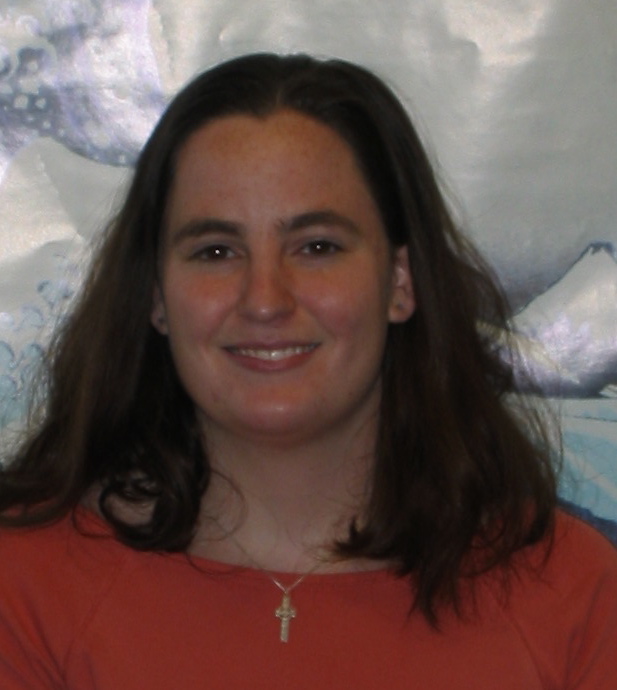 |
Elinor Keith
Undergraduate Student
Princeton University, Princeton, New Jersey
Elinor is a geoscience major in her senior year. She currently investigates the historical data
of the Smith Sound region as an REU at the University of Delaware. She presently uses the salinity
and temperature measurements to estimate steady currents assuming that the pressure gradient force balances the
Coriolis force.
|
 |
Lauren Brown
Undergraduate Student
University of Delaware, Newark, Delaware
Lauren is an undergraduate Physics major in her sophomore year. She currently investigates the
velocity field over the northern slope off Alaska and will apply these newly aquired skills to the velocity data
collected by the Healy.
|
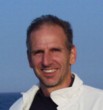 |
Robert McCarthy
Physics Teacher
Governor Mifflin High School, Shillington, Pennsylvania
Bob received his Ph.D. in Physical Oceanography, and has taught Oceanography at both Kutztown
University and Millersville University before becoming a high school physics teacher. Along with Gerhard Behrens,
he will be logging his experiences and posting updates and pictures on this web site. He is very excited about
this unique opportunity to be back out to sea, and to relate physics and scientific skills he's teaching in his
classroom to oceanographic research.
|
 |
| Oregon State University Team Members |
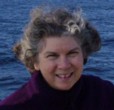 |
Charlotte Meredith
Head Analyst
Oregon State University, Corvallis, Oregon
Charlotte (Chi) will prepare for the oxygen isotopes, barium, dissolved organic carbon,
and trace metall sampling. She will also oversee the salinity calibrations and organizes
the hydrographic water sampling using the CTD rosette system.
|
 |
Dale Hubbard
Lab Technician
Oregon State University, Corvallis, Oregon
Dale prepared for and will run the dissolved oxygen samples during the expedition. He will also do
nutrients analysis. After finishing his Masters in Chemical Oceanography, he remained at OSU and has been a
technician for the past 5 years. This is his first cruise to the Arctic.
|
 |
Joe Jennings
Lab Technician
Oregon State University, Corvallis, Oregon
Joe is doing macro-nutrient analysis and dissolved oxygen analysis. He will be looking for evidence
of ammonium, nitrogen, phosphorous, and silicon. With the other technicians, he will be sampling and gathering data
nearly 24 hours a day while we’re in the areas of scientific interest. He’s been a tech over 25 years with lots of
experiences on cruises. Having been to Antarctica, this is his first cruise to the Arctic.
|
 |
Chris Moser
Coring Technician
Oregon State University, Corvallis, Oregon
Chris is one of two piston core technicians from Oregon State. Their team will collect cores from
the ocean floor from 10-20 meters in length, perhaps longer. He has over 30 years experience as a technician at
OSU, developing and using coring devices, moorings, sediment traps, and a other sampling equipment.
|
 |
Peter Kalk
Coring Technician
Oregon State University, Corvallis, Oregon
Working with Chris Moser, he will help direct the collection of cores for studying sediment layers.
Pete, too, has over 35 years experience as an oceanographic tech. He will also use his expertise to help with
mooring and collecting water samples.
|
 |
Jay Simpkins
Mooring Technician
Oregon State University, Corvallis, Oregon
Jay has prepared for dissolved Organic carbon (DOC) sensing mounts for the Coast Guard's
CTD-rosette
system. He will participate in the expedition to oversee the operation of this instrument and
contribute
his expertise to the mooring operations as well.
|
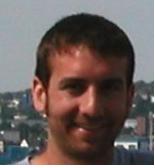 |
Scott McAulliffe
Graduate Student
Oregon State University, Corvallis, Oregon
Scott's main task is to run the salinometer, a device which will determine the salt content along a
column of water. It will provide a cross check with CTD instruments and will provide important keystone
measurements since the salinity is an indicator for, and influences, many other elements in the water. He is a
master’s student in Marine Resource Management.
|
 |
Gerhard Behrens
Teacher
Adams Elementary School, Corvallis, Oregon
Behrens duties include keeping a daily record of scientific activity,
providing descriptions of the Canadian Archipelago,
and assisting in data collection. He will be working on making lesson plans and
activities available for teachers and students to help understand the science of
Arctic research and the sociology of the polar region.
|
 |
| Institute of Ocean Sciences Team Members |
 |
Peter Gamble
Mechanical Technician
Institute of Ocean Sciences, Sidney, British Columbia, Canada
Pete is involved in the design, building, and maintenance of the instruments that will gather data
and retrieve water samples such as the ADCP and its moorings, and the CTD in its rosette. A self-described
“blacksmith of oceanographic tools,” and a former high school teacher, Pete uses his extensive electrical and
mechanical background to keep the instruments operational.
|
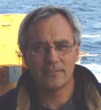 |
Ron Lindsey
Electronics Technician
Institute of Ocean Sciences, Sidney, British Columbia, Canada
Ron provides electronic support for oceanographic instrumentation, acoustic releases, CTD casts, and ADCP moorings.
He ensures that necessary signals get transmitted to these instruments. He repairs, modifies, and upgrades
equipment to make sure it serves the needs of the scientists.
|
 |
Mary O'Brien
Technician
Institute of Ocean Sciences, Sidney, British Columbia, Canada
Mary is assisting in the clam project. Clam samples will be photographed, the animal will be
shucked and frozen for later study, and the shells will be dried and stored for further analysis at Oregon State
University. The shells will be analyzed for oxygen isotope, barium, and cadmium. These materials should indicate
how much fresh or salt water, in the form of runoff, was present at the time of forming the shell. She and Dr.
Robie MacDonald will collect clams at different levels to examine differences in shell composition.
|
 |
John Harris
Technician
Institute of Ocean Sciences, Sidney, British Columbia, Canada
John works for Dr. Fiona McLaughlin. John will be the first to receive water samples and will focus
on measuring freons in the water. It is a tracer which tells when the water was last in contact with the
atmosphere. In conjunction with nutrient and oxygen analysis it gives the water a more complete, unique
fingerprint.
|
 |
| University of Victoria Team Members |
 |
Helen Johnson
Post Doctoral Fellow with Ocean Physics and School of Earth and Ocean Sciences
University of Victoria, Victoria, British Columbia, Canada
Helen uses models, observations, and theory to understand more about the global ocean circulation, ocean mixing,
and the flow through straits. She recently completed a PhD thesis on the Atlantic thermohaline overturning
circulation, for which freshwater input from the Arctic is crucial. She worked in the Arctic for the first time
last summer and got hooked. On board this year, she will work with the hydrography team.
|
 |
| New York University Team Members |
 |
Helga Schaffrin
Graduate Student
New York University, New York, New York
Helga just finished her third year of graduate school at the Courant Institute for Mathematical Sciences,
New York University, where she
pursues a Ph.D. in mathematics. Her area of research is the mathematical
modeling of sea ice dynamics. The goal is to explain and predict the
occurrence of ice-bridges in the Canadian Archipelago. By participating
in this research expedition, she hope to be able to observe this phenomenon
personally. Moreover, she will gain more insight into the data collection process in the field of (high latitude)
oceanography.
|
 |
| University of Rhode Island Team Members |
 |
Chip Heil
Lab Technician and Graduate Student
University of Rhode Island, Providence, Rhode Island
|
 |
Jason Ressler
Graduate Student
University of Rhode Island, Providence, Rhode Island
Chip and Jason will work with the piston coring team. After extracting the cores, they will analyze the cores right
away to get data on the magnetic susceptibility of the sediment core. This measure is an indicator for ice sheet
drainage and past climate. It is also an indicator for quantities of ice-rafted material and other terrestrial
materials. They are gathering data to determine if the Lancaster Sound is a part of the same drainage system of the
last ice age, like the Mississippi and Hudson Rivers.
|
 |
| Nunavut Sivuniksavut College Crew Members |
 |
Pauloosie (Paul) Akeegok
Undergraduate Student
Nunavut Sivuniksavut College, Ottawa, Canada
Paul will assist in the sampling of seawater, mooring, discovery and sampling of clam beds, record
wildlife sightings. He will keep the Nunavut communities informed about the cruise and report back to the Nunavet
Research Institute. He will also interact with the
two teachers of this project and others aboard regarding the way of life in the north. Pauloosie is
exploring
career options through this experience like all other students working on this expedition.
|
 |
| University of Hawaii Crew Members |
 |
Roger Davis
Software Engineer
University of Hawaii, Honolulu, Hawaii
Roger is in charge of the Multibeam. The Healy is equipped with a ship mounted Seabeam 2112. With
sonar and transducers on the ship, he monitors the sea floor swath mapping. This creates a map of the sea bottom
and many of its characteristics, which will add to the inventory of sea bottom maps.
|
 |
| Bedford Institute of Oceanography Crew
Members |
 |
Kumiko Azetsu-Scott
Research Scientist
Bedford Institute of Oceanography, Halifax, Nova Scotia
Kumiko is interested in Arctic and North Atlantic water interaction. On this cruise, she will
investigate and measure total inorganic carbon (total CO2) and alkalinity. The alkalinity is used as a tracer for
river water. With the combination of total CO2 and alkalinity, we can get an estimate of the CO2 contributed by
human activity.
|
 |
| Additional Crew Members |
 |
David Forucci
Science Liason
Civilian with US Coast Guard
David coordinates the equipment, science
projects, and scheduling for the Healy. He is involved in the long term planning of the cruise, so his work begins
long before the cruise sets off, arranging for such things as the use of the Iridium phone system.
|
 |
Joe DiGiovanni
Systems Administrator
Civilian with US Coast Guard
Joe is in charge of the computer operations
for the science community on board. He maintains a science data network, a system within which scientists can store
and share data as it being collected. He also handles electronic transmissions within, as well as off the ship so
that e-mail and information can be sent to labs and families.
|
 |
Yves Sivret
Ice Service Specialist
Canadian Ice Service
Yves' main job is to advise the captain and chief
scientists on ice conditions as we enter the areas that contain heavy ice flows. He also reports to his home office
in Ottawa to give visual confirmation of ice conditions that have been reported by satellite images.
|
 |
Ed Hudson
Meteorologist
Prairie Aviation and Arctic Weather Center, Meteorological Service of Canada
Ed is a meteorologist of 35 years, with 30 years dedicated to marine, aviation, and public weather forecasting for
the Canadian Arctic. His focus is to integrate arctic science with operational weather forecasting.
|
 |
Lee Narraway
Freelance Journalist and Photographer
Canada
Lee is taking photographs and writing stories about this
cruise for future magazine articles. She will tell the stories of the scientists aboard, follow the research on the
ship, and describe their long-term projects. She will also record the wildlife and geography of the area.
|
This material is based upon work supported by the National Science Foundation under Grant No. 0230236. Any opinions, findings, and conclusions or recommendations expressed in this material are those of the author(s) and do not necessarily reflect the views of the National Science Foundation.
|
